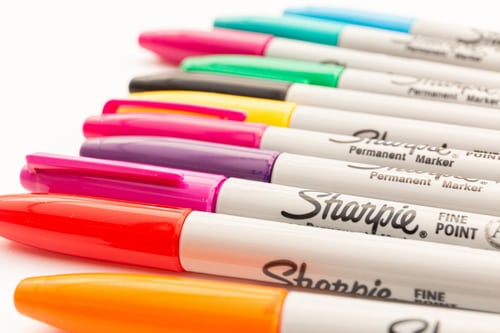Artists, designers, and painters utilize art markers to get a distinct look in their work than they would with coloured paints or pencils. Because of the smooth, quick-drying colours that art markers can generate, they are often employed in hand-lettering, penmanship, and technical illustrations. Art markers are sold under a variety of names (for example, marker pens, painter pens, paint pens, or brush markers) and are made by a variety of companies.
The Ancient Egyptians have been using ink for drawing and writing since 3200 BC. More freedom was wanted after pens were established to allow for simpler ink application, therefore markers were produced. The first felt-tipped marking pen was patented by Lee Newman in 1910, while the earliest fountain paintbrush was produced by Benjamin Paskach in 1926. With the invention of Magic Pens by Sidney Rosenthal in the 1950s, markers became truly popular. People began to utilize Magic Markers for everything, including lettering, labelling, and creating posters. Markers were quickly determined to have a lot of potential as an artistic medium.
What’s on the Inside of Art Markers?
The marker’s case, cap, and plugs are usually composed of plastic resins, while the reservoirs (the portion that carries the ink) is usually made of polyester. The markers’ tips are made of a water and powder mixture. The difference between markers is primarily due to the type of colorant used.
Ink, dye, or paint are examples of marker colorants that can be diffused in an alcohol, water, or solvent-based liquid. Synthetic solvents like toluol and xylol have been employed in the past, although they can be quite dangerous. These toxics have been replaced by far safer compounds in some markers.

Types of Markers
As previously stated, the sort of marker used depends on the colorant content. Water based, alcohol based, and solvent-based markers are the most common types. The kind of solution that is blended with the dye or ink is referred to as this. They could also be used as school-grade pens for youngsters or as professional-quality drawing markers.
Markers with various tips could also be double-sided. On one side, these markers usually have a little point and on the other, a broad chisel or brush. Consider what kind of advice you want so that you may get the most out of your purchase.
Water-Based Markers
Ink is mixed with water or a water-glycerine mixture in water-based markers. Due to the lack of additives, these markers have no odour, unlike alcohol-based or solvent-based markers. As a result, they are relatively safe and suitable for children.
Water-based pens are also perfect for calligraphy and other types of artworks because their ink is acid-free. Markers like posca paint pens provide ink that is opaque, waterproof, and dries swiftly. They do, though, take longer to dry than other markers, and using too many strokes on your paper will damage it.

Alcohol-Based Markers
Ink and alcohol are combined in alcohol-based markers. Alcohol-based markers generate vibrant colour that dries rapidly and lasts a long time. Because of the chemicals employed inside these markers, they have a strong odour. Even while they aren’t as potent as solvent-based markers, they can nevertheless cause irritation to the eyes and lungs.